TDS Under GST: Rules, Rates, Penalties & Refunds 2025
- 17 Oct 25
- 11 mins
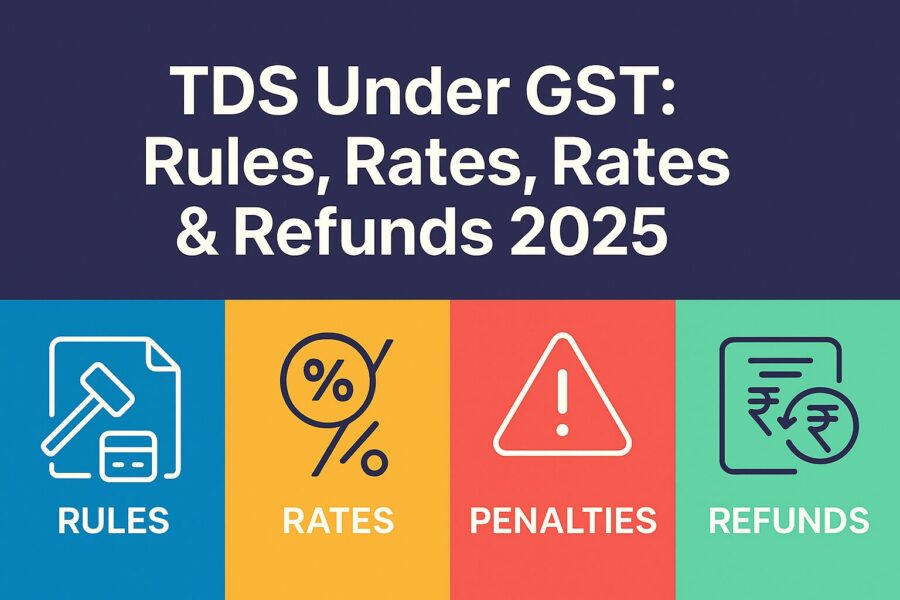
TDS Under GST: Rules, Rates, Penalties & Refunds 2025
- What Is TDS in GST?
- When Is it Necessary to Deduct TDS?
- What Is the Rate of TDS Under GST?
- Interest for Delayed or Non-payment of TDS to Government
- Who Shall Deduct TDS Under GST?
- Registration Requirements for TDS Deductors
- Is There Any Exemption to Applicability of TDS in GST?
- TDS Certificate Under GST
- Due Date for Depositing TDS with Government
- How to Claim a TDS Refund under GST?
- Conclusion
Key Takeaways
- TDS under GST ensures transparency and compliance by deducting 2% tax on payments for supplies exceeding ₹2.5 lakh.
- It applies to government departments, PSUs, local authorities, and notified entities making vendor payments.
- Deductors must deposit TDS by the 7th of the following month and issue Form GSTR-7A within five days.
- Interest and penalties apply for delayed deduction, deposit, or filing of TDS returns under GST.
- Refunds can be claimed for excess TDS paid, but only if the amount is not credited to the supplier’s electronic cash ledger.
Tax Deducted at Source (TDS) under GST is an important part of vendor payments and helps ensure a transparent, compliant procurement process, which is crucial for overall business compliance. It requires certain registered persons to deduct a small percentage of tax when paying suppliers.
For businesses aiming to build a complete supply chain solution, understanding TDS is key to managing smooth vendor transactions and proper tax reporting. In this blog, we will simplify key rules, rates, deadlines, penalties, exceptions and refund processes related to TDS under GST.
What Is TDS in GST?
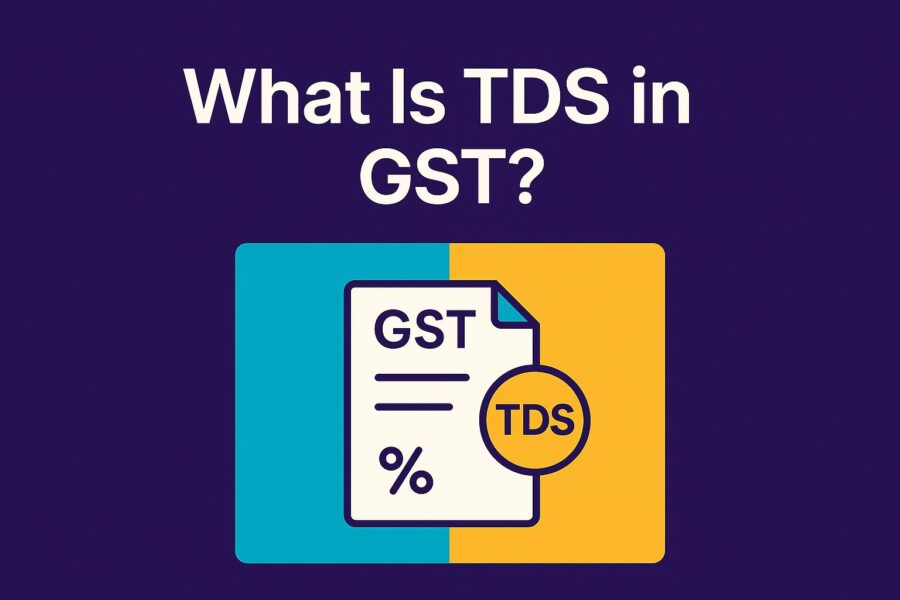
Tax Deducted at Source (TDS) is a method of collecting tax by deducting a certain percentage from the amount payable to the supplier of goods or services. Tax collected in this way is a source of revenue for the government. Section 51 of the CGST Act covers the rules for TDS under GST along with Rule 66 of CGST Rules.
When Is it Necessary to Deduct TDS?
TDS under GST must be deducted when the total value of taxable supplies of goods or services in a single contract is more than ₹2,50,000. When working out the TDS amount, you should not include GST (CGST, SGST, IGST) or any cess in the calculation. This ensures you deduct TDS only on the value of goods or services and not on the tax amount.
What Is the Rate of TDS Under GST?
Under India's Goods and Services Tax (GST) system, certain notified persons deduct Tax Deducted at Source (TDS) at 2% when they pay suppliers of taxable goods or services. They split this 2% as 1% CGST and 1% SGST, or deduct 2% IGST, depending on the type of supply. TDS applies when the total value of a single contract exceeds ₹2,50,000, even if individual items within the contract cost less.
Interest for Delayed or Non-payment of TDS to Government
If you do not follow TDS rules, there are penalties and interest charges. Failing to deduct TDS on time attracts interest at 1% per month, starting from the date it was due until the date it is actually deducted. If you deduct TDS but do not pay it to the government on time, interest at 1.5% per month is charged from the date of deduction until the date of payment.
Some expenses may not be allowed when calculating taxable income if TDS is not deducted or paid. For payments made in India, 30% of the expense will not be allowed as a deduction. For payments made to people outside India, the full expense can be disallowed.
If you file your TDS return late, you must pay a late fee of ₹200 per day until the fee matches the total TDS amount. In some cases, the penalty can range from ₹10,000 to ₹1,00,000 for late or incorrect filing. In serious cases, if you do not deposit TDS at all, you could even face imprisonment from 3 months to 7 years, along with a fine.
Who Shall Deduct TDS Under GST?
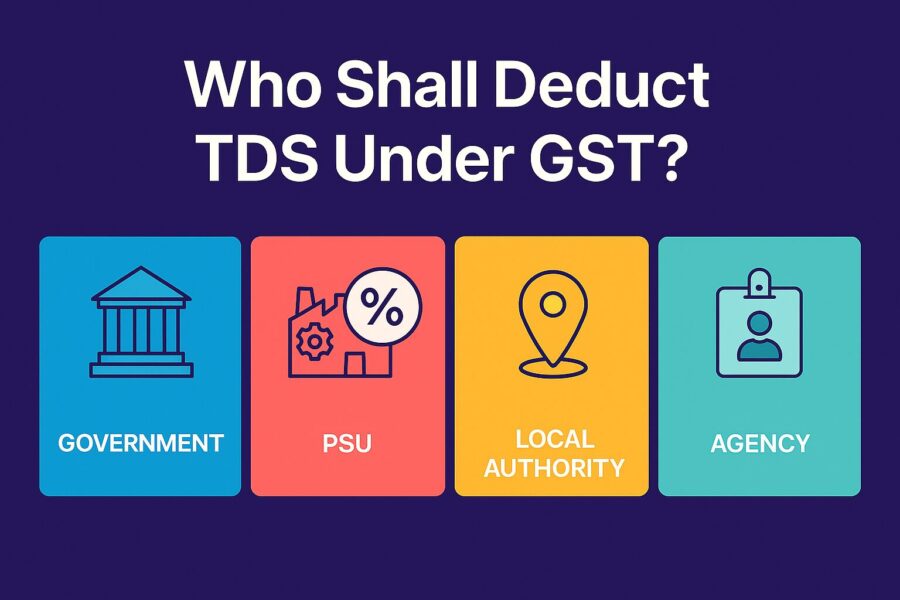
Following individuals and organisations must deduct TDS under GST before making vendor payments (payments to suppliers for goods or services), which is an important part of effective vendor management:
● Central / State Government departments
● Government Agencies & Persons
● Local authorities
● Public sector undertakings (PSUs)
● Societies set up by Central or State Governments or Local Authorities
● Boards or other bodies created through an Act of Parliament, State Legislature, or any Government
They do not need to deduct TDS in these cases:
● When one public sector undertaking supplies goods or services to another
● When local authorities, government agencies, or government departments deal with each other
These rules apply whether procurement is for large infrastructure projects, daily operations or even consumer products. Anyone who deducts TDS must have a Tax Deduction and Collection Account Number (TAN) under the Income Tax Act. They also need to register under GST, even if their turnover is zero. They can apply for GST registration without a PAN if needed.
Registration Requirements for TDS Deductors
Anyone, who wants to register as a Tax Deductor or Tax Collector under GST, must first submit a registration application directly through the online GST portal. The entire registration process takes place on the GST system and applicants must complete it themselves.
To apply, a person must use the prescribed application form and meet some key conditions:
● Applicants must have a valid PAN or TAN
● A working mobile number is essential
● Applicants must provide a valid email ID
● All necessary document details must be ready, including forms and supporting papers
● A proper place of business is necessary
● Appointment of an authorised signatory with complete and correct information
Without fulfilling these requirements, the GST system will not allow registration to move forward, and in some cases, non-compliance may even lead to cancellation of registration.
Is There Any Exemption to Applicability of TDS in GST?
The only exception to TDS under GST applies in the case of interstate supplies, where the supplier's location and place of supply are different from the recipient's place of registration.
For example, suppose the supplier is in Kolkata, and the recipient, who is registered in Mumbai, asks the supplier to deliver goods to someone else in Kolkata. In this situation, transferring TDS, specifically CGST and SGST from Kolkata, to the supplier's cash ledger in Mumbai becomes complicated. Due to this, the government excludes such transactions from TDS under GST.
TDS Certificate Under GST
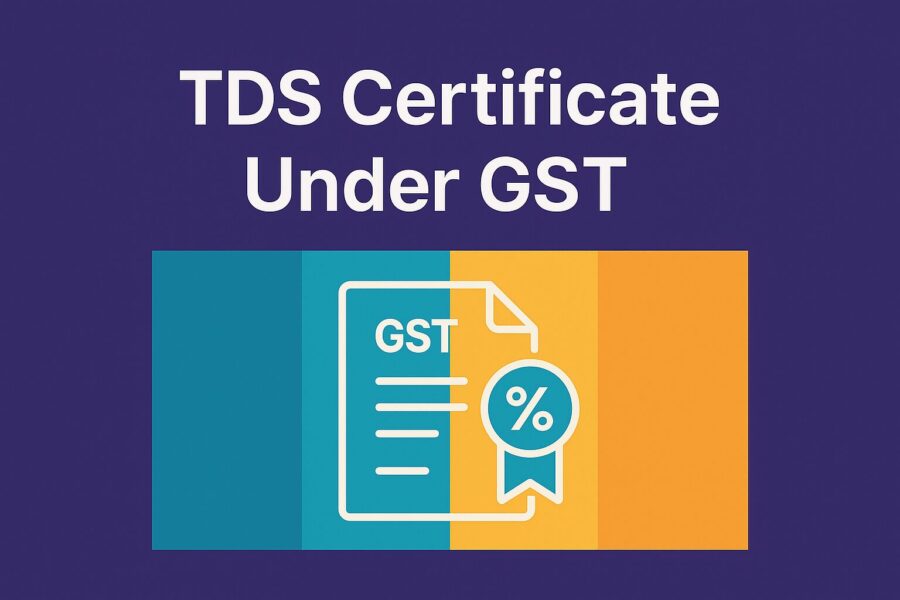
The buyer or recipient of goods or services must issue a TDS certificate to the supplier whose payment was reduced due to TDS. The buyer must issue this certificate within 5 days of paying tax to the government.
● Form GSTR-7A for TDS
Under GST, the TDS certificate is issued in Form GSTR-7A. The GST portal automatically creates this form based on the GSTR-7 return that the TDS deductor files. To generate a certificate on time, the deductor must file a form GSTR-7 return promptly. Both supplier and recipient can easily access Form GSTR-7A on the GST portal.
● Details in TDS Certificate
Form GSTR-7A shows important details, including:
1. TDS certificate number
2. Name and GSTIN of tax deductor (recipient)
3. GSTIN of a supplier whose tax was deducted
4. Value of supply, TDS rate, and TDS amount
5. A period when the tax was deducted and paid
6. Other relevant information
● Why Does the TDS Certificate Matter?
This TDS certificate helps the government check whether the tax deducted matches the amount reported in the TDS return and whether the deducted amount appears correctly in the supplier's electronic ledger through automatic reflection on the GST portal. Tax professionals often assist businesses in managing these TDS certificates and ensuring proper reconciliation.
● Similarity to Income Tax Process
The TDS process under GST is similar to the Income Tax system where Form 26AS tracks TDS, supporting both indirect and direct tax compliance. Both systems aim to make sure that tax deducted at source matches the amount actually paid to the government.
Due Date for Depositing TDS with Government
A person who deducts TDS must deposit tax with the government by the 7th of the following month. For example, if tax is deducted in January, payment must reach the government by the 7th of February.
Failing to follow TDS provisions under GST can lead to penalties and interest charges. Different types of non-compliance attract different consequences, such as:
● Not deducting TDS when required
● Deducting less tax than needed
● Delaying deposit of TDS
● Failing to issue a TDS certificate within a time limit
GST law includes clear penal rules for each of these situations to ensure timely deduction, payment and reporting of TDS.
How to Claim a TDS Refund under GST?
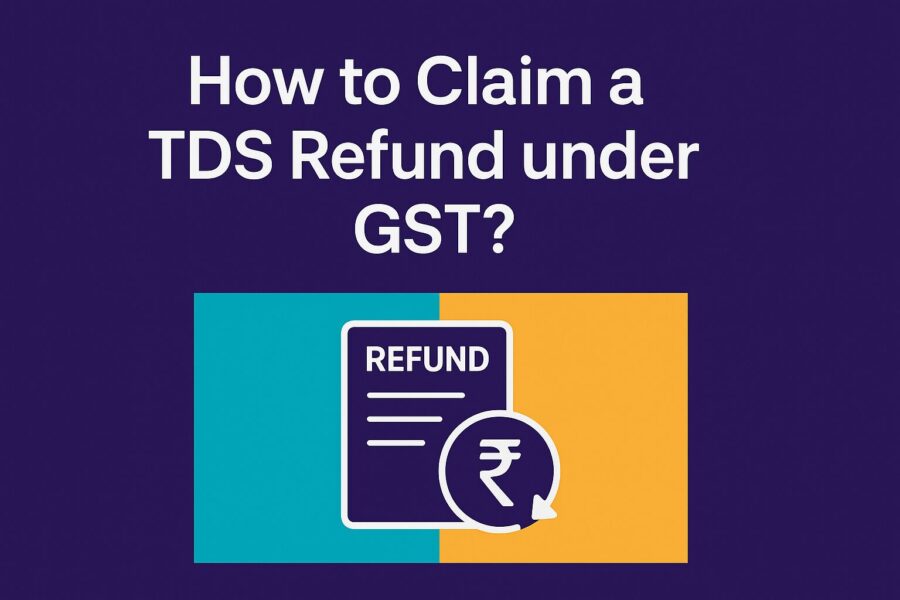
If more TDS is deducted and paid to the government than required, the extra amount can be claimed as a refund. This is because the extra tax is not actually due. However, if the deducted amount is already credited to the supplier's electronic cash ledger, the person who deducted the tax cannot get the refund. In such cases, only the supplier can claim the refund by following GST refund rules.
1. Latest GST Refund Updates
12th June 2025: GSTN has fixed issues with the portal for QRMP taxpayers. Now, they can file refund applications using invoices from the first two months of the quarter via the Invoice Furnishing Facility (IFF).
8th May 2025: Refunds for export of services, supplies to SEZs and deemed exports no longer need to mention the tax period. Taxpayers must now:
● Select the correct refund category.
● Upload invoice-based details and the required supporting statements.
● File GSTR-1 and GSTR-3B before applying.
2. Who Can Apply for a GST Refund?
● Exporters of goods and services
● Suppliers making zero-rated supplies without tax payment
● Taxpayers who paid extra tax by mistake
● Taxpayers with excess balance in the electronic cash ledger
3. Documents Needed
● GST refund application (Form RFD-01)
● Tax invoices
● Proof of tax payment (challans)
● Export documents (if applicable)
● Bank account details
● Any additional required documents
Conclusion
Under GST, TDS aids in preventing tax evasion and ensuring tax compliance. Certain notified registered persons are subject to these regulations, which are addressed in Section 51 of the Central Goods and Services Tax Act, 2017. If contract value exceeds ₹2.5 lakh in a fiscal year, deductors are required to deduct TDS at a rate of 2% from the value of goods or services provided (excluding GST and cess).
💡If you want to streamline your payment and make GST payments via credit, debit card or UPI, consider using the PICE App. Explore the PICE App today and take your business to new heights.
 By
By 

















